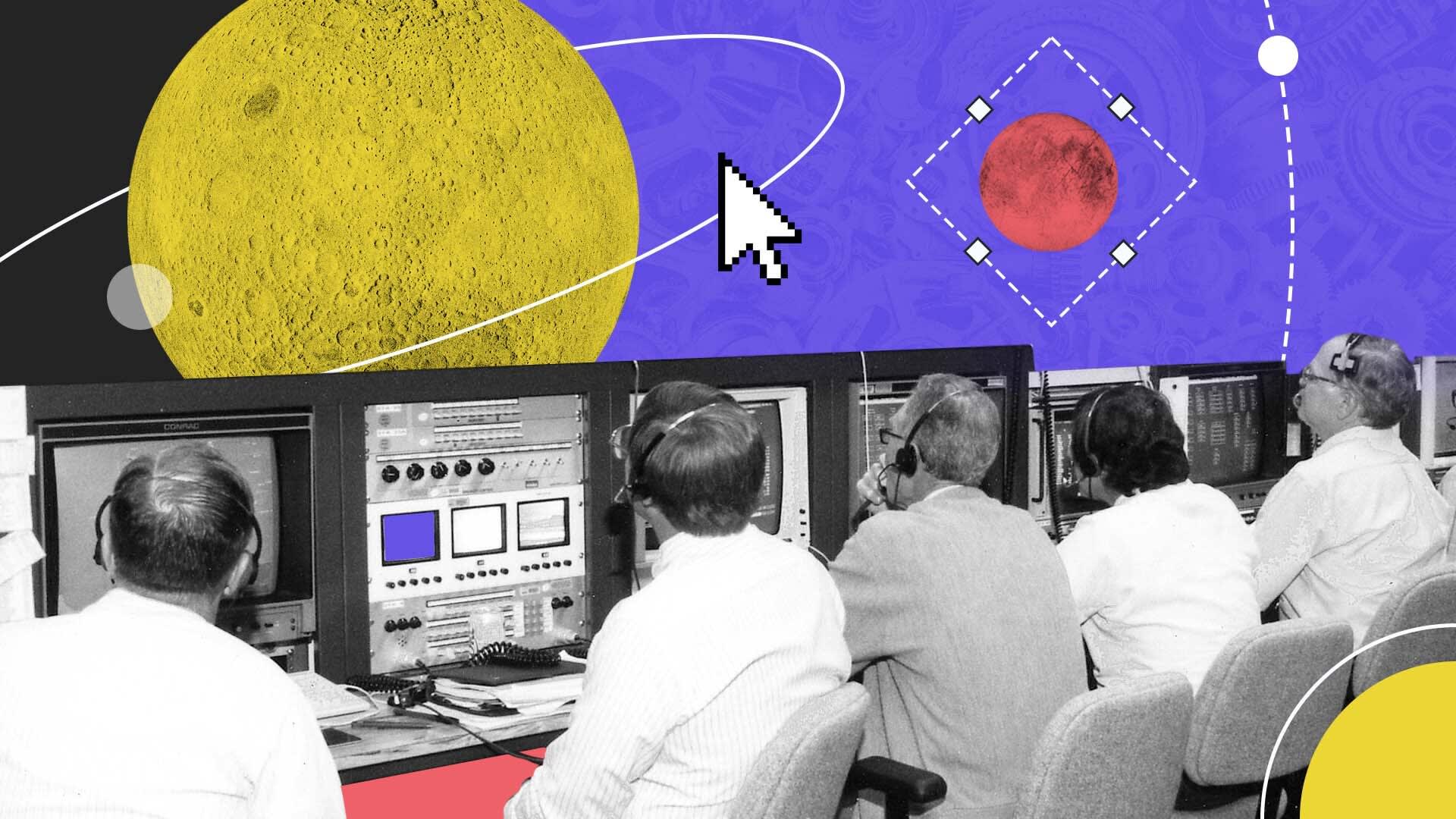Bad product design – key mistakes to avoid according to five experts
What made you leave a website in an instant? Was it a confusing interface, bad copy, or maybe the fact that it loaded endlessly? Irrespective of the issue, it most probably came down to bad product design. To help you avoid similar mistakes in your digital product, we’ve asked our product designers to share their experiences. Here’s what they said.

Table of contents
Why is product design important?
How many times have you clicked on a link which was #1 on Google, just to leave the site within three seconds because the design was unbearable? People have plenty of options to choose from and they don’t have to tolerate a lack of good product design. If you want to make sure that your visitors, clients or users stay with you longer, then you have to provide them with a good user experience! This means not only following the best design practices but also knowing what mistakes to avoid.
We’ve talked to five product designers and asked them what bad product design examples they’ve come across recently, along with advice on how they could be fixed. Here is what they said.
5 examples of bad product design – real-life examples from our product designers
If you’re aiming for an innovative product design, then here are a few mistakes that you have to avoid at all costs.
1. Insufficient feedback
“Insufficient feedback indicates bad product design. In the throes of searching for a holiday apartment during high season, it’s easy to miss out on important information. On a popular booking site that offers accommodation by the sea, there is a page where a user can see a big button which says “Book here”. Since the website looks modern, booking through it seems to be safe.
After selecting the date range or specific accommodation, you can click on “Select” and even pay for the accommodation in the process. After going through all the steps, when you think everything has gone well and you’re ready to travel, you get a confirmation email, which says “Reservation confirmation. Accommodation inquiry.” After going through the entire process it turns out that you haven’t actually booked yet; you’ve only asked whether the house you were interested in is available on the selected dates.
Needless to say, this could lead to a huge problem, as you can travel a long distance without any accommodation booked. Unfortunately, that’s what happened to me. To avoid this kind of confusion, the website owner should focus more on microcopy (button labels, notifications, and e-mail copy). The user should not have any doubts about the flow or what is currently happening with their accommodation.” – Sylwia Pechcin
2. Checkout process errors
“When I was furnishing my apartment, I browsed through many websites that offer furniture, wallpaper, and other decor and renovation products. To be honest, I suffered a lot in the process due to bad product design. Finally, though, I found an online store that I really liked and ended up adding many products to my cart. I was really happy to have finally found what I thought was the Holy Grail of home decor sites.
When I was ready to check out, I just clicked on the shopping cart. Next, I filled out the address and selected the payment method. When I was ready to proceed, I started looking for the button that would take me to the next step. I noticed that the “Live Chat” button was placed right on top of the “Next” button. I was literally dumbfounded. I tried to click on the “Next” button but it wouldn’t work. I could not finalize the purchase. All the time I had spent selecting products went down the drain.
After this situation, I just left the site, probably like many others before me. This was a terrible shopping experience and definitely not the best product design. To avoid this type of situation, the website owner or designer should go through the full checkout process before releasing it to users, checking if it can be completed without hassle.” – Kamil Staśko
3. Lack of proper CTA hierarchy
When we started working with our new client from the printing industry, we noticed a lot of things that needed improvement to allow customers to both design and print materials such as business cards, flyers, posters, etc.
While watching session recordings on Hotjar, we noticed that users weren’t able to find the right call-to-action button on the product pages to start the process as there were two to choose from:
- the ”Add to cart” button was visible, but it was supposed to be a secondary action on the page and had been disabled,
- the ”Design online” button was below the fold, meaning no one ever scrolled to it; to see it and start designing, users had to scroll through all the technical options, like dimensions, orientation, and paper type that had to be selected first.
To fix the product design we locked the “Design online” button position on the interface above the fold (at the bottom part of the screen) and made it visible while scrolling the options and content. It was important to keep this button below the technical options because the user had to select desirable features first as their choices affected the final design.
Additionally, we added a short description (“Choose the product configuration below first and then start designing”) to make it very clear what the flow was for the users. After implementing this change, the conversion rate went up. To me, it’s another proof that the main calls-to-action should always be placed above the fold.” – Martyna Wantulok
4. Lack of localization
“I use Behance on a desktop to search for the best product design inspirations. Last week, for the first time, I visited the platform on my phone. I tried browsing through other designers’ projects and was intrigued by the fact that on a mobile, the tab that lets you switch between “For you” and “Following” is moved to the bottom of the screen.
It got me wondering whether it was a good decision – after all, on mobile, all the elements that are at the bottom of the screen are close to our fingers. Meaning they should be reserved for quick, frequent actions, and the switching option doesn’t seem to be one. And yet, I thought, “OK, maybe they’ve done their research and know better.” It’s not easy to judge when you don’t have any user data.
Another thing that caught my attention though was the “Save“ button in the Polish version of the app. Typically, it reads as “Zapisz“. However, the button ended up appearing as “Z…sz”. The localization and adaptation of the application are very important because, if done incorrectly, they can completely distort the app’s functionality.
I searched for the saving option for well over 30 seconds, wondering how I could finally add a project to my mood board. I was frustrated and felt disregarded, realizing that someone did not pay enough attention to the Polish language version of the app. Behance – you can do better!” – Kamil Zieliński
5. Poor UX writing
Recently, when shopping for Christmas presents, I came across a retailer I haven’t visited for a while. Actually, it’s been so long since I last visited their site that I forgot I had an account with them! Naturally, after attempting to register, I was reminded that an account with my email already existed. After a few failed login attempts I proceeded to reset the password. At this point, I realized that in order to recover the password, the website required the post code my account was linked to.
Since the last time I shopped there, I have moved to three different cities, so I had to scan my emails to dig out an old order confirmation with, presumably, the right post code on. After entering the password recovery details, there was no confirmation that the information was correct, just a popup saying “If the details are correct, you will receive an email…’’. Well… I didn’t get any emails and returned to the website thinking that the post code must’ve been wrong and took another stab at logging in – with no luck.
I repeated the password reset process (using different post codes) and after a day of waiting for the email to arrive, I contacted customer support. Only to find out that three incorrect login attempts lead to an account getting locked for an hour during which password reset is not possible. We cannot call that the best product design, can we?
A few thoughts: there are ways other than locking a user out of an account that would ensure security but if you really have to, warn them first. Also, is it really necessary to provide email and post code to recover a retail website password?. – Agata Guz
Poor product design - summary
While working on a digital product or service, it’s important to be aware of the mistakes that could lead to bad product design. Among others, you need to remember about the right CTA hierarchy on your site, regularly check your key user journeys for errors, and follow the right UX writing practices. Remember, that on the other end of your product is a human being who needs to find solutions to their needs and problems, quickly and efficiently!
Avoiding the mistakes our experts have shared in this piece will get you one step closer to a functional and easy to use product design. This means you’ll also set your product up for success and promote higher user engagement and conversion. Good luck, and if you need help in designing your digital product, be sure to reach out! https://www.boldare.com/contact/

Share this article:








